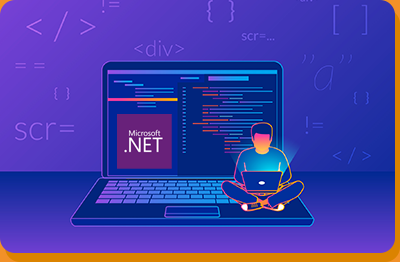Microsoft .NET
What is .NET?
.NET is an open-source developer platform for building many different types of apps. The platform is often referred to as “Microsoft .NET” since Microsoft developed it. However, unlike traditional Microsoft products, .NET is free to use and considered open-source.
Microsoft .NET can support all editing tools, libraries, and programming languages. Thanks to its versatility, your DevOps team can use it to create applications for just about any medium, from web to mobile or even internet of things (IoT) devices.
Since its release, Microsoft .NET has become a staple in the application development community. Everyone from individual developers to huge DevOps teams relies on it as their preferred application creation platform.
Like other open-source solutions, .NET is supported by a vast community of active developers. While Microsoft created it, the .NET Foundation oversees it. This independent organization encourages collaboration and promotes open development within the .NET ecosystem.
When you join the .NET community, you can turn to active developers to answer questions, provide insights about how to use the platform, and source talent for big projects. Plenty of proprietary .NET tools are available that you can use to supplement the platform’s built-in functionality.
What is Microsoft .NET used for?
Microsoft .NET is used to build web, desktop, mobile, and IoT applications. More recently, .NET has been equipped with tools to build machine learning applications. Your DevOps team can use these new features to add ML functionality like predictive models, speech processing, and vision algorithms to your applications.
The platform’s primary programming language is C#, which is a favorite among developers. Here’s an overview of some of the many languages .NET supports:
These are only three of the most highly recommended programming languages for .NET. You can also use Eiffel, PowerBuilder, IronPython, ClojureCLR, and many other niche programming languages to create apps in .NET.
Microsoft .NET also supports the Common Language Infrastructure (CLI), which compiles your source code into Common Intermediate Language (CIL). This feature guarantees interoperability between different languages within the platform.
.NET architecture and components
Microsoft .NET has a modular architecture, which means you can build a wide variety of different apps. Whether you want to create a simple command-line app or a robust gaming application, you can do it all in .NET.
Microsoft .NET’s architecture includes two foundational components:
Since .NET is an open-source solution, you have the freedom to make it your own. You can add components created by a vast community of developers, build your own tools and functionalities, and modify the platform based on your team’s needs.
With Microsoft .NET, the possibilities are virtually endless, especially if you have some skilled DevOps professionals on your team.
If you need to supplement the talent of your in-house team, check out the global community of developers. You’re sure to find someone with the skill set you’re looking for among the thousands of .NET developers.
Why is .NET monitoring important?
Microsoft .NET monitoring provides end-to-end visibility of your .NET application, allowing you to optimize its health and performance. With .NET monitoring, you can pinpoint potential bottlenecks that could undermine your team’s productivity or derail your app development project.
The best Microsoft .NET monitoring solutions not only track performance metrics but also reveal the underlying causes of various problems so you can address them at their source.
Take a proactive approach to Microsoft .NET monitoring and maintain a development environment that allows your DevOps team to leverage their full creative potential.
